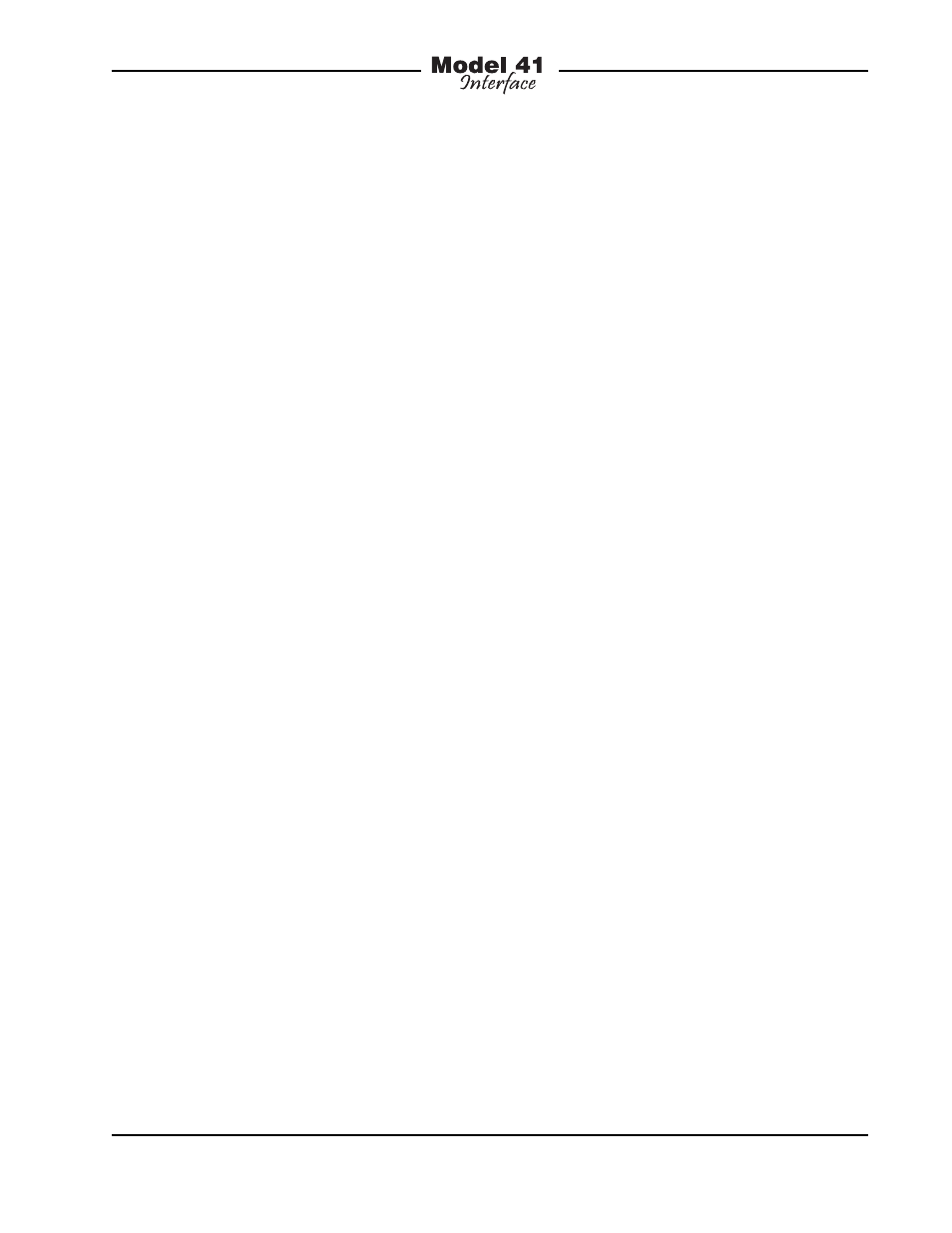Cable length – Studio Technologies 41 2004 User Manual
Page 16

Model 41 User Guide
Issue 1, October 2004
Studio Technologies, Inc.
Page 17
There’s really only one piece of advice
when it comes to understanding how
to use the under-voltage status LEDs: if
they’re flashing there’s a problem that
must be corrected! The most likely cause
will be a wiring fault that causes a partial
or full short circuit between pin 1 (com-
mon) and pin 2 (power with audio) on the
IFB circuit’s XLR-type output connectors.
Another cause can be due to problems
with the IFB user devices. Either a defec-
tive user device can be drawing too much
current, or too many user devices end up
being connected to the same IFB circuit.
Troubleshooting an IFB circuit problem
should prove quick and easy. Begin
by disconnecting the IFB user devices.
Observe the status LED and see if the
problem has gone away. If not, review the
interconnecting cables and find the fault
condition. Within a few seconds of the
problem being “cleared” the status LED
will stop flashing.
Determining the actual IFB circuit current
draw won’t often be required but can be
useful in a tough trouble-shooting situa-
tion. This measurement can be performed
using any good-quality digital multimeter.
Begin by setting the meter to measure
DC current. Then place the meter leads in
series with the pin 2 lead of the XLR-type
connector associated with the IFB circuit
to be tested. The easiest way to measure
the pin 2 current is to create a simple
adapter cable using one female and one
male 3-pin XLR-type connector. Connect
pin 1 on both connectors together. Con-
nect pin 3 on both connectors together.
Connect separate wires to the pin 2 leads
on both connectors. Then connect the
meter leads to these two wires. The meter
will indicate the DC current being drawn
while normal operation of the connected
device(s) takes place. Be certain to con-
nect the maximum number of devices
that might be powered by the IFB circuit.
That is, measure the worst-case condition
and ensure that the load is within the rated
200 milliamperes output. If possible, leav-
ing a 10 or 20% reserve margin is a good
practice.
Technical Notes
Cable Length
There are no hard and fast rules defining
the maximum cable length possible when
connecting user devices to Model 41 IFB
circuits. The maximum cable length is
directly related to the amount of resistance
in the connecting cable; the lower the re-
sistance per foot (or meter), the longer the
cable can be. (Although cable capacitance
affects high-frequency performance, resis-
tance is the limiting factor in this case.) For
example, a standard 20 AWG microphone-
type cable is Belden 8412, which has 10.9
ohms resistance per conductor per 1000
feet. Since we’re using two conductors
to carry the signal (pins 1 and 2) you’d
get 21.8 ohms per 1000 feet of cable. By
knowing the cable resistance value, along
with the minimum voltage and maximum
load current required by an IFB user de-
vice, a simple “ohms law” calculation will
tell you the maximum cable length.
Let’s use the example of a Studio Tech-
nologies Model 200 Announcer’s Console
being connected to a Model 41 IFB circuit.
We’ll select Belden 8412 as the intercon-
necting cable. For correct operation, the
Model 200 needs at least 24 volts DC
between pins 1 and 2 of its IFB input con-
nector. It has a current draw of 95 milliam-
peres. The Model 41’s IFB circuit presents
